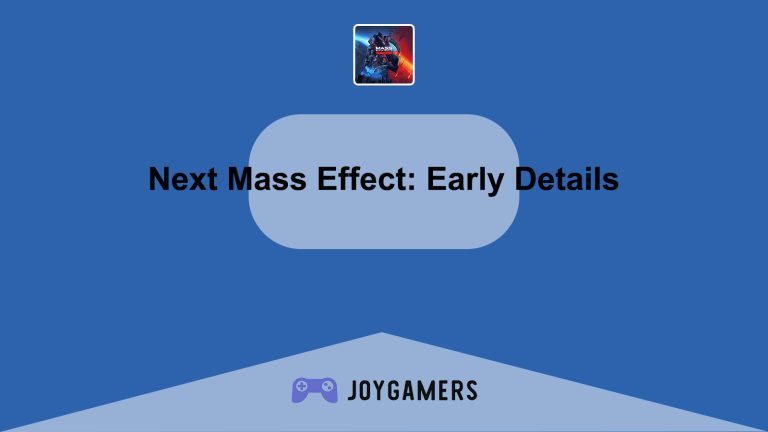Introduction to The Witcher 4 Development
As excitement builds around the development of The Witcher 4, fans of the acclaimed series are eager for a behind-the-scenes look at what the new installment will offer. Developed by CD Projekt Red, The Witcher 4 is one of the most anticipated games in the role-playing genre, promising to expand on the rich lore and immersive gameplay that the series is known for. This article explores the developmental stages, featuring insights from the developers, and what players might expect in terms of storyline, gameplay mechanics, and technological advancements.
Conceptualization and Story Development
The initial phase of creating The Witcher 4 involves extensive conceptualization and storyline development, ensuring the game’s narrative richness continues to captivate players.
- Expanding the Witcher Universe: The developers have decided to delve deeper into the untapped areas of the Witcher lore, potentially exploring characters and regions only briefly mentioned in previous games. This approach not only refreshes the series with new content but also maintains the connection to the beloved universe. The narrative team at CD Projekt Red spends countless hours researching and brainstorming to create a storyline that is both innovative and true to the established lore. They aim to weave complex characters with intricate backstories, engaging players in a narrative that is both emotionally and intellectually stimulating.
- Collaboration with Andrzej Sapkowski: To ensure authenticity and depth in the storyline, CD Projekt Red has continued their collaboration with Andrzej Sapkowski, the original author of The Witcher novels. This partnership allows the developers to integrate nuances from the literary world of The Witcher into the game, enriching the narrative experience. Sapkowski’s involvement provides a layer of literary scrutiny to the storyline, ensuring that the game remains true to the source material while exploring new narrative possibilities. This collaborative process is pivotal in crafting a game world that feels expansive and coherent, offering new adventures that resonate well with both new players and longtime fans of the series.
Gameplay Innovations
The Witcher 4 promises to introduce several gameplay enhancements that aim to improve player experience and immersion.
- Revamped Combat System: The development team is focused on overhauling the combat system to offer a more fluid and responsive experience. Recognizing some of the criticisms of previous games, they are implementing a more dynamic combat style that allows for greater flexibility and strategic depth. This includes new types of weaponry and magic, as well as improved enemy AI that adapts to the player’s combat style, making battles more challenging and rewarding. The goal is to create a system where each fight feels unique, requiring players to constantly evolve their tactics.
- Enhanced Role-Playing Elements: CD Projekt Red is known for its strong role-playing components, and with The Witcher 4, they are pushing these elements even further. This involves deeper character customization options, more impactful decision-making, and enhanced world-building that reacts to the player’s choices. The developers are designing a world where every choice has consequences, aiming to fully immerse players in the repercussions of their actions. This level of interactivity is intended to increase the replayability of the game, providing different outcomes and experiences based on the player’s decisions.
Technological Enhancements
To support the ambitious goals for The Witcher 4, CD Projekt Red is leveraging cutting-edge technology to improve both the visuals and performance of the game.
- Next-Gen Graphics and Art Design: Utilizing the latest advancements in graphics technology, The Witcher 4 is being developed with a high focus on visual quality. The art team is working with new rendering techniques and high-resolution textures to create stunningly detailed environments and character models. This effort is complemented by advanced lighting and weather systems that enhance the realism and atmospheric effects of the game’s world. The visual fidelity not only serves aesthetic purposes but also plays a crucial role in storytelling, providing a more immersive and emotionally engaging experience.
- AI and Machine Learning: Innovative use of AI and machine learning technologies is a cornerstone of the development process for The Witcher 4. These technologies are employed to enhance NPC behavior, creating characters that respond more realistically to player actions and environmental changes. Additionally, machine learning is used to optimize the game’s performance across different hardware systems, ensuring a smooth gaming experience for all players. This approach not only improves the gameplay mechanics but also helps in creating a lively, ever-adaptive game world that feels alive and responsive.
Conclusion: Setting a New Standard
With The Witcher 4, CD Projekt Red is not just creating another sequel; they are setting a new standard for what an RPG can be. From deep narrative development to innovative gameplay enhancements and cutting-edge technology, the development of The Witcher 4 is a testament to the dedication and creativity of its team. Fans and new players alike have much to look forward to, as this game promises to be a pivotal addition to the Witcher saga and a landmark in the gaming industry. As the development progresses, it will be exciting to see how these ambitious goals are realized in the final product.




